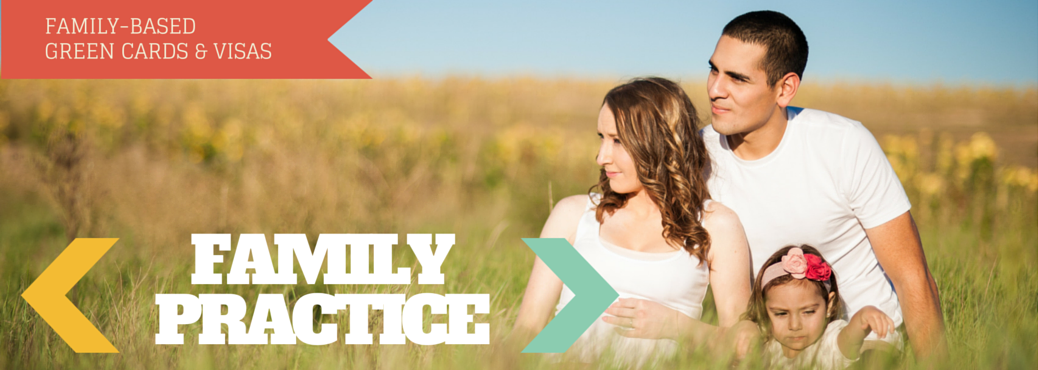 The law office of Leda Yu, Esq. provides immigration representation to individuals and families in all aspects of family-based immigration, including I-130, fiancé(e) visas, naturalization, green card renewals and consular petitions.
The law office of Leda Yu, Esq. provides immigration representation to individuals and families in all aspects of family-based immigration, including I-130, fiancé(e) visas, naturalization, green card renewals and consular petitions.
We assist individuals and families through the tedious process of becoming an American permanent resident, and eventually, a naturalized U.S. citizen. We painstakingly prepare your application for filing and when the time comes, prepare you for your interview with an immigration officer.
 Apply for a Green Card
Apply for a Green Card
 Renew your Green Card
Renew your Green Card
 Removal of Conditions
Removal of Conditions
You may apply for a Green Card (aka become a permanent resident) through a family member. You may be eligible to get a Green Card if you are:
- an immediate relative of a U.S. citizen, this includes spouses, unmarried children under the age of 21, and parents of U.S. citizen petitioners 21 or older
- a family member of a U.S. citizen fitting into a preference category, this includes unmarried sons or daughters over the age of 21, married children of any age, and brothers and sisters of U.S. citizen petitioners 21 or older
- a family member of a green card holder, this includes spouses and unmarried children of the sponsoring green card holder
a member of a special category, this can include battered spouse or child (VAWA), a K nonimmigrant, a person born to a foreign diplomat in the United States, a V nonimmigrant or a widow(er) of a U.S. Citizen
Use the tabs below to learn about the Green Card process for the various categories.
Get a Green Card While Inside the United States
One Step Process
Certain people are eligible to apply for a green card (permanent residence) while inside the United States. An immediate relative relationship allows you to apply on Form I-485, Application to Register Permanent Residence or Adjust Status, to become a permanent resident at the same time your U.S. citizen petitioner files Form I-130, Petition for Alien Relative. For more information on filing for permanent residence in one step, see our Concurrent Filing page.
Two Step Process
You still have the option to file your I-485 application any time after your petitioner files a Form I-130, for you, as long as it has not been denied. Generally, you will need to submit a copy of Form I-797, Notice of Action, with your Form I-485, that shows the Form I-130 petition is either pending or approved.
Step One – Your U.S. citizen immediate relative must file the Form I-130 for you and it must be either pending or approved.
Step Two – After you receive Form I-797, Notice of Action, showing that the Form I-130 has either been received by us or approved, then you may file Form I-485. When you file your I-485 application package, you must include a copy of the Form I-130 receipt or approval notice (the Form I-797). For more information on filing for permanent residence, see our Adjustment of Status page.
Get a Green Card While Outside the United States
If you are currently outside the United States and are an immediate relative of a U.S. citizen, you can become a permanent resident through consular processing. Consular processing is when USCIS works with the Department of State to issue a visa on an approved Form I-130 petition when a visa is available. You may then travel on the visa and will officially become a permanent resident when admitted at a U.S. port of entry. For more information on consular processing for immediate relatives of U.S. citizens, see the “Consular Processing” link to the left under “Green Card Processes & Procedures.” The Department of State will notify you when you are eligible to apply for an immigrant visa. If you do not apply for an immigrant visa within one year following notification from the Department of State, your petition may be terminated.
Things to keep in mind:
Turning 21 years of age. When an immediate relative child of a U.S. citizen reaches the 21 years of age, he or she generally will become a “first preference” (F1) category son or daughter (over 21 years of age) of a U.S. citizen, and will no longer have a visa immediately available. This change may result in a significant delay in adjustment of status or visa processing because he or she will now need to wait for an immigrant visa to become available. For more information, see our Visa Availability & Priority Dates page.
Child Status Protection Act. In certain cases, the Child Status Protection Act (CSPA) may allow you to retain the classification of “child” even if you have reached age 21. Generally, your age is “frozen” as of the date your U.S. citizen parent files Form I-130 for you.
Getting Married. If an immediate relative child under age 21 gets married, he or she can no longer be classified as an “immediate relative” and will become a “third preference” (F3) category married son or daughter of a U.S. citizen and a visa would no longer be immediately available. You must notify us of any change in your marital status after Form I-130 has been filed for you and prior to becoming a permanent resident or obtaining an immigrant visa.
Get a Green Card While Inside the United States
If you are currently in the United States and are one of the specified categories of relatives of a U.S. citizen in a preference category, you may be able to become a permanent resident in two steps.
Step One – Your U.S. citizen family member (sponsor) must file the Form I-130, Petition for Alien Relative, for you and it must be approved. You must wait for your priority date in your immigrant visa category to become current. Your priority date is the date when the Form I-130 is properly filed (with correct fee and signature) on your behalf by your U.S. citizen relative.
Step Two – Once the priority date in your visa category is current, you may file for Adjustment of Status with Form I-485, Application to Register Permanent Residence or Adjust Status. Adjustment of Status is the process you go through to become a Permanent Resident.
Get a Green Card While Outside the United States
If you are currently outside the United States and are one of the specified categories of relatives of a U.S. citizen in a preference category, you can become a permanent resident through consular processing. Consular processing is when we work with the U.S. Department of State to issue a visa on an approved Form I-130 petition when a visa is available. In this process the Department of State will issue you a visa. If approved, you may then travel on the visa and will officially become a permanent resident when admitted at a U.S. port of entry.
Things to keep in mind:
The Child Status Protection Act (CSPA). In certain cases, the CSPA may allow you to retain the classification of “child” even if you have reached age 21. Generally, your age is “frozen” as of the date your U.S. citizen parent files Form I-130 for you.
Getting Married. If you are the unmarried son or daughter of a U.S. citizen and you get married prior to becoming a permanent resident, then you no longer qualify as an “Unmarried Son or Daughter of a U.S. Citizen” and will convert to the category of “Married Son or Daughter of a U.S. Citizen.” This change in categories may result in a significant delay in your immigrant visa becoming available. You must notify us of any change in your marital status after Form I-130 has been filed for you and prior to becoming a permanent resident or obtaining an immigrant visa.
Get a Green Card While Inside the United States
If you are currently in the United States and are one of the specified categories of relatives of a permanent resident, you may be able to become a permanent resident in two steps.
Step One – Your permanent resident relative must file Form I-130, Petition for Alien Relative, for you and it must be approved. You must wait for your priority date in your immigrant visa category to become current. Your priority date is the date when the Form I-130 is properly filed (with correct fee and signature) on your behalf by your U.S. permanent resident relative.
Step Two – Once the priority date in your visa category is current, you may file for adjustment of status with Form I-485, Application to Register Permanent Residence or Adjust Status.
Get a Green Card While Outside the United States
If you are currently outside the United States and are one of the specified eligible categories of relatives of a permanent resident, you can become a permanent resident through consular processing. Consular processing is when we work with the U.S. Department of State to issue a visa on an approved Form I-130 petition when a visa is available. In this process the Department of State will issue you a visa. If approved, you may then travel on the visa and will officially become a permanent resident when admitted at a U.S. port of entry.
Things to keep in mind:
Turning 21 years of age. If you are an unmarried child of a permanent resident, turning 21 years of age may delay the process of becoming a permanent resident or obtaining an immigrant visa. You will no longer qualify as an “Unmarried Child of a Lawful Permanent Resident” (F2A) and will convert to the category of an “Unmarried Son or Daughter of a Lawful Permanent Resident (F2B).” This change in categories may result in a significant delay in your immigrant visa becoming available.
The Child Status Protection Act (CSPA). In certain cases, the CSPA may allow you to retain the classification of “child” even if you have reached age 21.
Getting Married. If you are the unmarried son or daughter of a permanent resident, and you get married prior to becoming a permanent resident, you no longer qualify for permanent residence through your permanent resident family member. There is no visa category for a married child of a permanent resident. Note: You must notify USCIS of any change in your marital status after Form I-130 has been filed for you and prior to becoming a permanent resident or obtaining an immigrant visa.
Permanent Resident Relative Becomes a U.S. citizen. If the permanent resident relative that petitioned for you becomes a U.S. Citizen, your preference category would change and a visa may be available sooner. This is because you would now be getting a green card as a relative of a U.S. citizen.
For more information on the following categories of family members please contact our office or visit www.uscis.com
- Battered Spouse or Child (VAWA)
- K Nonimmigrant (includes fiancé(e))
- Person Born to a Foreign Diplomat in the United States
- V Nonimmigrant
- Widow(er) of a U.S. Citizen
